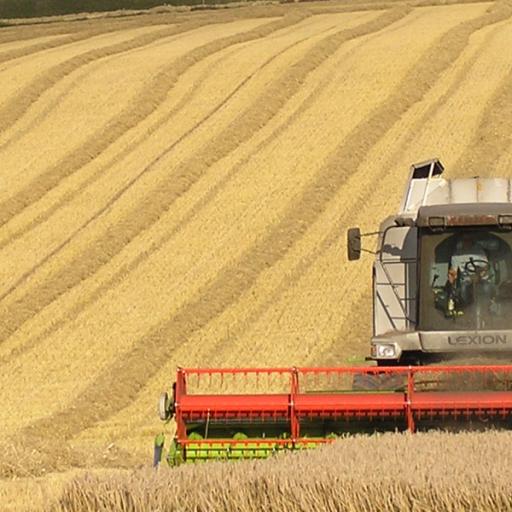Despite their beneficial environmental services, European agriculture is associated with a series of adverse environmental effects. Among the factors creating the unbalance between agriculture and environment, CAP measures are considered of primary importance. Supports linked with output levels (coupled payments) increased production to levels that would not have occurred otherwise, resulting into intensification, specialization, expansion of cultivated areas and rise in livestock numbers (Baldock et al., 2002). Even though coupled payments have not yet been cancelled by EU market policy (Pillar I), the Commission circularly admitted in 1988 that such a price policy is liable for environmental damages (Fennel, 1997) and decided to reorganize CAP as a response to the wider demand for an environmentally oriented CAP.
The major element of the 1992 or McSharry CAP reform was the gradual reduction or even elimination of production subsidies and the introduction of direct aid payments, provided per hectare (decoupling) to compensate farmers for support price cuts (EC, 2003). The substitution of price support measures by decoupled payments was continued by the 1999 or Agenda 2000 reform, which makes direct aid payments conditional to environmental aims (i.e. hor- izontal regulation). A long-term set-aside mechanism4 was proposed and a package of rural development measures (Pillar II) was promoted to complement reforms of common market organizations (CMOs) and internalize major environmental considerations. To maximize environmental benefits, both direct and pillar II payments are subject to the cross-compliance principle, a sanctioning approach incorporated in horizontal regulation that involves proportionate penalties for environmental infringements entailing, where appropriate, partial or full removal of aid in the event of deviation from certain farming standards (EC, 1999). Finally, dynamic modulation involves the transfer of funds released from the compulsory reduction of market policy payments to rural development measures contributing to environmentally benign practices. The reforms were strengthened by the 2003 or Mid-term review CAP reform, which introduced a single payment scheme based on direct payments received during the period 2000-2002 and the hectares entitled for those payments, as well as redeÖning the cross-compliance principle to make it dependent on the detected noncompliance type (EC, 2004b).
The major element of the 1992 or McSharry CAP reform was the gradual reduction or even elimination of production subsidies and the introduction of direct aid payments, provided per hectare (decoupling) to compensate farmers for support price cuts (EC, 2003). The substitution of price support measures by decoupled payments was continued by the 1999 or Agenda 2000 reform, which makes direct aid payments conditional to environmental aims (i.e. hor- izontal regulation). A long-term set-aside mechanism was proposed and a package of rural development measures (Pillar II) was promoted to complement reforms of common market organizations (CMOs) and internalize major environmental considerations. To maximize environmental benefits, both direct and pillar II payments are subject to the cross-compliance principle, a sanctioning approach incorporated in horizontal regulation that involves proportionate penalties for environmental infringements entailing, where appropriate, partial or full removal of aid in the event of deviation from certain farming standards (EC, 1999). Finally, dynamic modulation involves the transfer of funds released from the compulsory reduction of market policy payments to rural development measures contributing to environmentally benign practices. The reforms were strengthened by the 2003 or Mid-term review CAP reform, which introduced a single payment scheme based on direct payments received during the period 2000-2002 and the hectares entitled for those payments, as well as redeÖning the cross-compliance principle to make it dependent on the detected noncompliance type (EC, 2004b).
Agenda 2000 is known as the "Green CAP" because of the belief that it brings greater quality to environmental integration. However, the theoretical analysis of this regime has been rather limited and its environmental impacts have not yet been fully assessed to justify such a characterization. Hence, the intention of this paper is to evaluate the e§ectiveness of the given CAP reform to stimulate compliance of an entire population of either unboundedly or boundedly rational farmers with a socially desirable environmental target. This is achieved by considering the mechanism that provides the type of the CAP instruments, along with the type of interdependence characterizing them which guarantees the achievement of such a target.10 To do so a conceptual, theoretical framework describing farming behaviour under the Agenda 2000 provisions is developed, by considering a homogeneous population of farmers where each farmer is eligible for a production subsidy and two types of direct payments provided for alternative land treatments: (i) cultivation and (ii) set-aside. The given Önancial provisions are granted to each European farmer through a public voluntary program, in the form of a formal contract between the entitled farmer and the Commission. Given the attainment costs of environmental requirements incorporated in direct payments, two strategies are considered: compliance with and deviation from farming standards. A deviating strategy can be detected via random inspections, given the non-point-source characteristics of agricultural pollution, and deterred via the enforcement of the cross-compliance principle.
The socially optimum CAP measures under the common market organizations are obtained by a system comparing the solution of the optimal regulator with the solutions of the deviating, optimum farmer in a static context. Given that the number of instruments is higher than the number of externalities optimal CMOs CAP measures are defined for fixed values of the rest CAP measures. The type of interdependence between the various CAP measures and the optimal measure, as well as the conditions under which a particular CAP regime is optimal to occur are respectively provided. After defining the dynamic socially optimum CAP measures the e§ectiveness of Agenda 2000 is also assessed under an evolutionary context. The framework of replicator dynamics is employed to examine whether the reformed CAP can induce the majority, or even all the farmers to adopt a "greener" behavior relative to the previous CAP regimes, and define the type and the range of values of the various CAP instruments that render feasible the attainment of such a target. As previously, the problem of the optimal regulation is discussed both in a static and dynamic context to assess the type of socially optimal rural development (RD) CAP measures.
The assessment of the socially optimum CMOs and RD CAP regimes both in static and dynamic context indicated that it may be socially desirable not only to maintain coupled payments but also to extend the compliance enforcement mechanism with a set of charges on either crop yields, land-usage, set-aside-land and / or secondary production choices. Given the current structure of CAP such measures are not foreseen and hence both Agenda 2000 and Mid-term review are ex-ante suboptimal. The suboptimality assertion is further supported by the fact that the attainment of first-best solutions requires both nonuniform and time-flexible Pillar I and Pillar II CAP measures that however are practically infeasible given the high informational or / and administrative requirements they involve. Henceforth, the answer to the question whether Agenda 2000 CAP regime is indeed greener compared to the previous CAP regimesõõis uncertain and conditional to the characteristics of the given crop type. A further deepening and extension of the communal agricultural policy is rendered necessary so that given environmental targets are achieved in both static and dynamic context.







